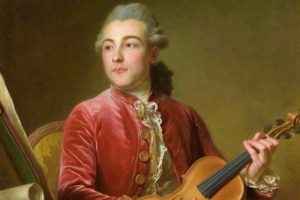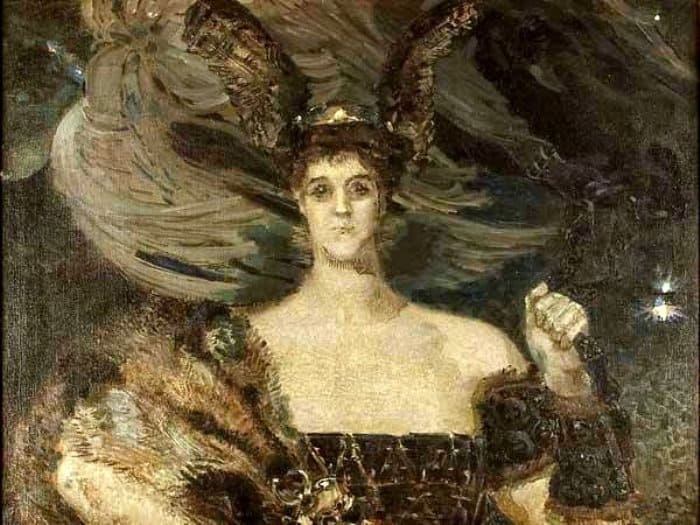Musical hoax: Who actually wrote “Adagio” Albinoni
 Adagio Albinoni is a truly enchanting piece of music. The melody as if touches the hidden strings of the human soul, is remembered for a long time and then, it seems, sounds inside. At first, no one doubted that the author of “Adagio in G Minor for String Orchestras and Organ” was precisely Tomaso Albinoni. However, musicologists today almost with absolute certainty declare: in fact, a completely different person created the ingenious music.
Adagio Albinoni is a truly enchanting piece of music. The melody as if touches the hidden strings of the human soul, is remembered for a long time and then, it seems, sounds inside. At first, no one doubted that the author of “Adagio in G Minor for String Orchestras and Organ” was precisely Tomaso Albinoni. However, musicologists today almost with absolute certainty declare: in fact, a completely different person created the ingenious music.
In 1671, in Venice, in a rather wealthy family of a merchant and patrician Antonio, a boy named Tomaso was born. It is unlikely that the parents then assumed that their son would become a famous composer, and a few centuries after his death he would become famous throughout the world.
Very little has been preserved about the life and formation process of composer Tomaso Albinoni. He began his musical career as a violinist, then began to write music, devoting his works and even entire collections to the honorable and famous people of his time. Thanks to his marital status, he could write music completely independently, not seeking to get a place as a court composer or to serve in any one church.
He created instrumental music, but became famous in Italy primarily as an opera composer. In 1722, the elector of Bavaria, Maximilian II Emanuel, invited Albinoni to head his opera. Probably, a cycle of 12 sonatas, personally dedicated to the Elector, played a role in this.
In recent years, Albinoni lived in obscurity. At the same time, colleagues and admirers of his work believed that he was no longer alive when in 1742 his collection of violin sonatas was published and presented to the public in the form of a posthumous publication. In fact, the talented composer died only 9 years later. According to researchers of his biography and creativity, from the consequences of diabetes. After his death, the composer was undeservedly forgotten, but interest in his work flared up thanks to Remo Gadzotto.
The future composer and musicologist was born in 1910 in Milan. Here he received his first knowledge of composition and mastered playing the piano. After leaving school, Remo Gadzotto became a student at the University of Genoa, where he studied literature and philosophy.
The musicologist began his career in 1932 in the journal Italian Music Review as a critic, and 13 years later he was already the editor of the same publication. In 1949, Remo Gadzotto switched to the RAI radio station, and later on his life was closely connected with Italian broadcasting. In addition, the composer and musicologist taught the history of music in Florence at the university, and was the co-editor of the New Italian Music Review.
He himself constantly strove for excellence, so throughout his life he enthusiastically studied the history of Italian music, becoming, as a result, the author of several biographies and books.
Real fame came to Remo Gadzotto in 1958, when he first published Adagio Albinoni, allegedly reconstructed by him from a small fragment found in the Dresden Library in the very beginning of the 1940s. Based on just a few beats for violin and bass voice to them, Jazzotto, according to him, managed to completely reconstruct the melody written in the XVIII century.
It never occurred to anyone to question the words of such an authoritative and respected person as Remo Gadzotto. Moreover, during the Second World War, the musical heritage of Albinoni, stored in the Dresden Library, was simply lost. However, in 1998, Woolf Dieter Lutherg, together with Volker Schutz, published letters from the Saxon State Library, from which it became clear: the fragment actually declared by Jazzotto was never in the library.
However, “Adagio Albinoni” was already known and loved all over the world, this work revived interest in the work of the composer of the Baroque era. Perhaps he really did not write this adagio, and the author of it, according to musicologists, is Remo Gadzotto himself.
In fact, this does not detract from the musical value of the work itself, and we just have to enjoy the bewitching sounds that Remo Gadzotto kept or created for us.
Music is an integral part of people’s lives, for some it passes in the background, for some it becomes the meaning of life. For Alice Herz-Sommer, music was what gave her the strength to live and that literally saved her and her son from death. If not for the music – Alice had no doubt about it – she would not have been able to survive the Holocaust.




